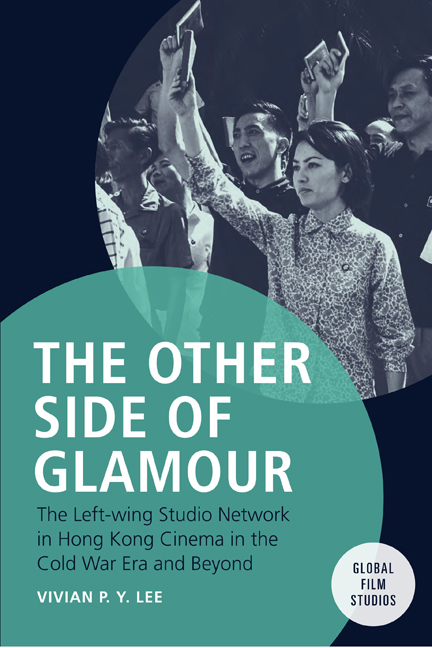 The Other Side of Glamour
The Other Side of Glamour Book contents
- Frontmatter
- Cotents
- List of Figures
- Acknowledgments
- A Note on the Timeline
- Timeline
- Dedication
- 1 Introduction
- 1 The Left-Wing Film Apparatus in Postwar Hong Kong
- 2 Left in the Right Way: Corporate Strategy and the Making of a Popular left-wing
- 3 Remaking Cantonese Film Culture: Union and Sun Luen
- 4 Class, Gender, and Modern Womanhood: Feng Huang and Great Wall
- 5 Corporate Repositioning, Transnational Cultural Brokerage, and Soft Power: Sil-Metropole
- 6 Critical Transitions on the Non-Left: Patrick Lung and Cecile Tang
- 7 From Political Alibis to Creative Incubators: the Left-Wing Film network since the 1980s
- Epilogue
- Bibliography
- Filmography
- Index
6 - Critical Transitions on the Non-Left: Patrick Lung and Cecile Tang
Published online by Cambridge University Press: 17 September 2020
- Frontmatter
- Cotents
- List of Figures
- Acknowledgments
- A Note on the Timeline
- Timeline
- Dedication
- 1 Introduction
- 1 The Left-Wing Film Apparatus in Postwar Hong Kong
- 2 Left in the Right Way: Corporate Strategy and the Making of a Popular left-wing
- 3 Remaking Cantonese Film Culture: Union and Sun Luen
- 4 Class, Gender, and Modern Womanhood: Feng Huang and Great Wall
- 5 Corporate Repositioning, Transnational Cultural Brokerage, and Soft Power: Sil-Metropole
- 6 Critical Transitions on the Non-Left: Patrick Lung and Cecile Tang
- 7 From Political Alibis to Creative Incubators: the Left-Wing Film network since the 1980s
- Epilogue
- Bibliography
- Filmography
- Index
Summary
The decline of left-wing studios during the Cultural Revolution and their subsequent consolidation into a market-oriented conglomerate, Sil-Metropole Ltd., marked the end of what can be called the “classical period” of Hong Kong's left-wing cinema. As mentioned in Chapter 5, the left-wing's progressive ethos was adapted into the corporate mission of Sil-Metropole as both Hong Kong and China entered a new phase of political and economic transformation. While the reconfiguration of the classical left-wing into a multimedia conglomerate marked an important transition in China's cultural policy, which sees culture as both soft power and an instrument of economic modernization, the local cinema was seeking new orientations that would eventually render the left–right divide obsolete. While politics and society continued to inspire local filmmakers, the decline of the left-wing studios signaled a gradual shift from the classical left-wing's commitment to cinema as a form of social action and mass education to more individualistic visions of society and culture. These new voices were harbingers of a home-grown art cinema, a critical transition that anticipated the arrival of what came to be known as the “New Hong Kong cinema” in the 1980s.
This chapter takes a detour into the critical transition made by Patrick Lung Kong (1934–2014) and Cecile Tang Shu-shuen (b. 1941). Different in background and artistic orientation, both Lung and Tang stirred up controversies and debates over their filmic interventions into politics and society. Lung's 1970 feature, Yesterday, Today, Tomorrow, came under fire by pro-China groups for its barely disguised condemnation of the violence and chaos instigated by left-wing activists in Hong Kong during the 1967 riots. Didactic and prescriptive at times, Lung's films display a greater confidence in the city's modern institutions and the liberal values they represent, which inevitably alienated him from the anti-capitalist and anti-colonial politics of the left -wing. Born in Yunan and educated in the US, Tang made her debut, The Arch, in 1969, an award-winning film showcased at film festivals in Taiwan and Europe.
- Type
- Chapter
- Information
- The Other Side of GlamourThe Left-wing Studio Network in Hong Kong Cinema in the Cold War Era and Beyond, pp. 115 - 131Publisher: Edinburgh University PressPrint publication year: 2020
